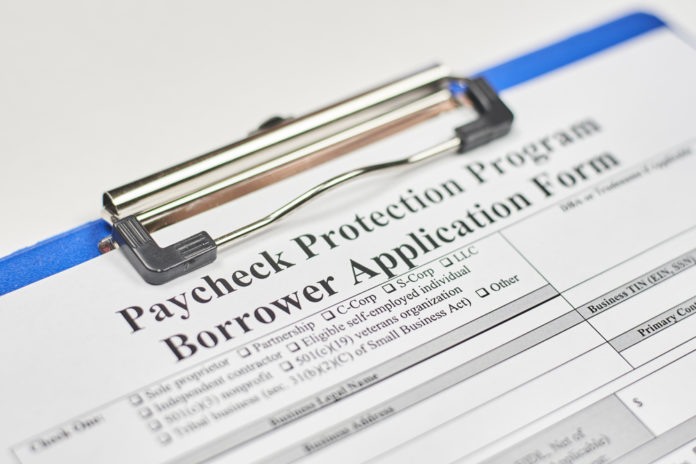By Brent Calhoon of Baker Tilly
The Coronavirus Aid, Relief, and Economic Security (CARES) Act Paycheck Protection Program (PPP) has stirred up increasing chatter, consternation and controversy since its debut in early April. We’ve been watching and listening, but we’re not seeing and hearing the self-evident things that we expected to see and hear. Which means our views might be wrong, or unpopular, or perhaps even both or neither. For those that know us and read this blog, you know we advocate for common sense government contracting. Although a PPP loan isn’t a government contract, it comes with a unique forgiveness feature that allows the government to convert the loan, effectively, into a quasi-grant.
With a country in crisis and the small business community in dire straits, Congress rushed to pass legislation and the Small Business Administration (SBA) quickly issued implementing regulations. What could possibly go wrong? For those of us in the government contracting community, when we see snarly language in regulations like “you will be subject to additional liability such as charges for fraud,” we know to pay very close attention to the fine print. All of it.
The marketplace is abuzz with debate and confusion around a particular statement to which a PPP loan applicant much certify: “current economic uncertainty makes this loan necessary to support the ongoing operations of the applicant.” Given the unprecedented circumstances created by our collective reactions to the coronavirus pandemic, most rational business owners and operators could (and still can) make that representation in good faith. Although seemingly uncontroversial for most small businesses, this point is in the spotlight after the Treasury Department made it murkier by connecting “necessity” with the “ability to access other sources of liquidity sufficient to support their ongoing operations in a manner that is not significantly detrimental to the business.”
Strangely, we don’t see any meaningful attention given to the next, and perhaps more instructive, statement to which an applicant must certify: “the funds will be used to retain workers and maintain payroll or make mortgage interest payments, lease payments, and utility payments; I understand that if the funds are knowingly used for unauthorized purposes, the Federal Government may hold me legally liable such as for charges of fraud.” This statement goes beyond meeting the need for a PPP loan – it gets into how the loan will be used once received. We suspect Congress used the words “retain” and “maintain” intentionally, since they show up in a couple different places. Most business owners we know would not use “other sources of liquidity” to retain workers they no longer, and cannot foreseeably, need to support operations.
Taken together, these two certification statements bring the program’s name into focus: to protect paychecks. To us, the certifications make it reasonably clear that Congress intended PPP loans to help businesses pay employees that would otherwise (and necessarily) have been furloughed, laid off, or taken pay/schedule cuts. Perhaps alternatively, PPP loans could allow small business to retain employees and maintain payroll at lower productivity levels and, thus, allow the business to retain some modicum of profitability (i.e., often the small business owner’s own “payroll”).
We reasonably guess that a great majority of small businesses have experienced economic uncertainty and could use a cash infusion, if not immediately then to cushion whatever might happen next as the crisis unfolds. However, not all small businesses have experienced, or will experience, deteriorating operating revenues such that a PPP loan is necessary to “retain workers and maintain payroll.”
The SBA hasn’t yet issued regulations to implement Section 1106 of the CARES Act concerning PPP loan forgiveness. Nevertheless, the uncertainty surrounding forgiveness has sounded alarm bells within government and sparked pleas for clarity from the business community. Most of what we see and hear focuses on ambiguities around calculating the forgiveness amount.
Based on the broad-brush language on SBA’s website, it seems like a forgone conclusion that loan proceeds spent on payroll, rent, utilities, and other allowable expenses will be forgiven once we get the math worked out. However, “payroll” (which must represent at least 75% of the amount forgiven) isn’t just any payroll; it must be payroll associated with “retained employees.” This is in the fine print to which the borrower must certify when seeking loan forgiveness. Proceed carefully.
In this regard, we’ve summarized below four risk areas that PPP loan applicants and recipients should keep top of mind:
1. The documented rationale/basis of certifications made at the time of loan application (see discussion above);
2. Documentation of how the loan proceeds are used once received. Make sure you know the permissible uses – they’re in the CARES Act (Section 1102) and SBA’s regulations (85 FR 20811). In this regard the SBA’s regulations caution borrowers: “If you knowingly use the funds for unauthorized purposes, you will be subject to additional liability such as charges for fraud.”
3. The documented basis of certifications made when requesting loan forgiveness. Were loan proceeds used to pay payroll that you otherwise would have paid if you didn’t have the PPP loan? If so, would profitability have deteriorated without the PPP loan? Was the loan used to pay employees that you may have laid off, cut pay, or cut hours but for the loan? Document all of this now, and be particularly careful if loan forgiveness will cause your business to become more profitable. In our experience the government doesn’t look favorably upon windfall profits.
4. For government contractors and recipients of federal assistance awards, prepare analyses that demonstrate expenses related to PPP loan forgiveness weren’t also recovered by other forms of government contract or grant recovery, or vice versa (i.e., no double dipping).
Congress intended the PPP loan program to help small businesses weather the COVID-19 crisis by keeping their employees and maintaining payroll. Despite the program’s confusing terms, the relief it offers can ease the financial burden of payroll and other permissible expenses arising from many legitimate operational impacts. Be sure to work with qualified business advisors and counsel to evaluate, manage, and mitigate the risks associated with receiving government money. Stay aligned with the intent of the Paycheck Protection Program and proceed with confidence, but be ready to demonstrate compliance with the fine print.




